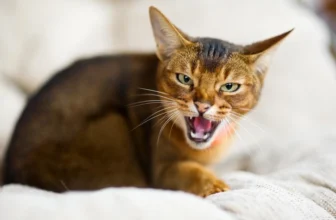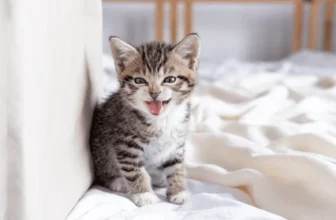It’s a heart-wrenching experience to leave your American Wirehair alone at home and come back to find them in a state of distress. Separation anxiety is a common behavioral issue that affects pets and their owners alike. If you’re dealing with this issue, you’re not alone. It’s important to understand the underlying causes of separation anxiety to address it properly. In this article, we’ll provide you with step-by-step instructions to train your American Wirehair to cope with separation anxiety effectively. Follow these guidelines, and soon both you and your furry friend will feel at ease when you are apart.
The Causes of Separation Anxiety

As pet parents, we all know how heartbreaking it can be to see our furry friends in distress, especially when it comes to separation anxiety. This type of anxiety is a common issue among American Wirehairs and can cause various unwanted behaviors. In order to tackle this problem effectively, it’s essential to understand what causes separation anxiety in American Wirehairs. In this section, we’ll discuss some of the factors that can contribute to separation anxiety. Understanding these causes will help you take the necessary steps to prevent and manage this issue in your furry friend. To learn more about how to prevent and manage separation anxiety in American Wirehairs, check out our comprehensive guide here.
Lack of Exercise
Just like with humans, a lack of exercise can also contribute to separation anxiety in American Wirehairs. Regular physical activity doesn’t just keep your pet’s body healthy, but also helps alleviate their anxiety, stress, and boredom. When a pet is constantly confined to a small space without the chance to exercise, it can lead to pent-up energy and frustration, which can cause them to show signs of anxiety.
To prevent this, it’s important to provide your American Wirehair with plenty of opportunities to exercise. Take them for walks or runs, provide toys for them to play with, and set up playdates with other dogs to help your pet release their energy and reduce boredom.
Incorporating exercise into your pet’s routine is especially important if they’re left alone for long periods of time, as it can help them stay calm and relaxed when you’re away. In fact, a study conducted by the American Kennel Club found that regular exercise can help reduce separation anxiety in dogs.
So, make sure your American Wirehair is getting enough exercise and stimulation to prevent their anxiety from getting worse. This can go a long way in helping your pet cope with separation anxiety and preventing destructive behavior and other negative symptoms associated with the condition.
For more tips on addressing separation anxiety in American Wirehairs, check out our article “How to Train American Wirehairs to Cope with Separation Anxiety”.
Changes in Routine
Changes in routine can have a significant impact on American Wirehairs and their ability to cope with separation anxiety. These changes can include alterations to their daily schedule, such as feeding times or exercise routines, or changes in their environment, such as moving to a new home or changes in living arrangements. When these changes occur, it can be a stressful time for your furry friend. It can trigger separation anxiety, especially if your pet becomes reliant on a particular routine or environment.
To minimize the impact of such changes, gradually introduce them to your American Wirehair. For example, if you’re moving to a new house, start by introducing your pet to the new house while still living in the old one. Take them on walks or allow them to explore the rooms that are free from boxes and clutter. Slowly increase the time spent in the new environment while maintaining your pet’s routine and ensuring they get enough exercise and mental stimulation.
Similarly, if you’re anticipating a change in routine, consider slowly transitioning them to the new schedule. For example, start feeding them at the same time each day as the new schedule will require. This helps adjust their internal clock and minimize the stress that sudden changes can cause. By providing consistency and structure, your pet is less likely to experience separation anxiety due to changes in their routine or environment.
Changes in routine can have a significant impact on your American Wirehair and their ability to cope with separation anxiety. Gradually introducing changes and maintaining a consistent routine can help reduce the stress and anxiety that your pet experiences. To learn more about the signs of separation anxiety, visit our article on American Wirehair separation anxiety. And to learn more about using exercise to reduce anxiety, check out our article on the importance of exercise in reducing separation anxiety in American Wirehairs. If your pet struggles with severe anxiety, consider consulting a veterinarian about medication for American Wirehair anxiety.
Previous Negative Experiences
American Wirehairs with previous negative experiences may be more prone to separation anxiety. These negative experiences can include abandonment, abuse, or sudden changes in their living situation. This is because they may associate being alone with negative experiences from their past.
It is important to approach training with a level of understanding and patience. Owners should not punish their American Wirehairs for exhibiting behaviors related to their past negative experiences. Instead, owners should focus on creating a positive and safe environment for their pet.
One effective way to do this is by using positive reinforcement. Owners can use treats, praise, and toys as rewards for positive behavior. This can help build trust and create positive associations with being alone.
Another way to address previous negative experiences is by desensitization. This involves exposing the American Wirehair to situations that trigger their anxiety, but in a controlled and gradual manner. Owners can start by leaving the house for a few minutes and gradually increase the time. This can help the cat become more comfortable with being alone and reduce their anxiety.
Ultimately, addressing previous negative experiences requires patience and understanding. Owners should also be willing to seek professional help if needed. A veterinarian or animal behaviorist can provide additional guidance and support in addressing separation anxiety related to past negative experiences.
By using effective training techniques and creating a positive environment, owners can help their American Wirehairs overcome their separation anxiety, even if it stems from previous negative experiences.
Recognizing the Signs of Separation Anxiety
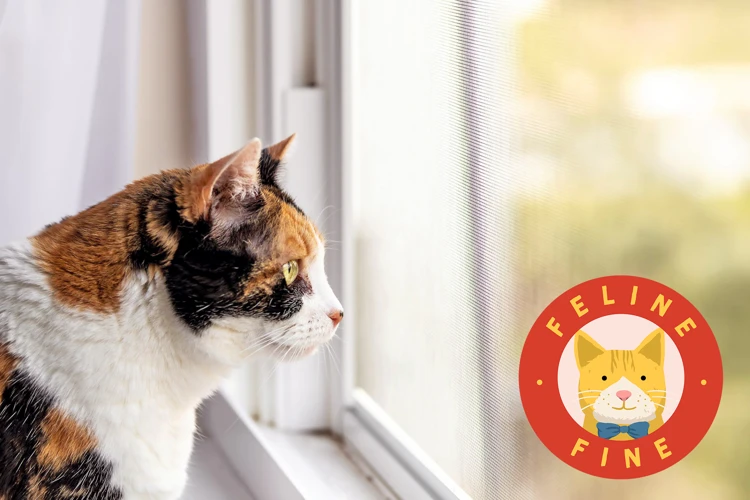
As much as we hate to see our American Wirehairs suffer from separation anxiety, it’s crucial to understand the signs of this condition to help them cope better. In some cases, the signs may not be as obvious as we think, and we may miss them entirely. Recognizing these signs is imperative to gain an understanding of your pet’s behavior and to take the appropriate steps to address their anxiety. Let’s dig into some of the most common signs of separation anxiety in American Wirehairs.
Destructive Behavior
One of the most common signs of separation anxiety is destructive behavior. This behavior can manifest as chewing on furniture, scratching at doors or walls, or even digging through carpet or flooring. If you notice that your American Wirehair has taken to destructive behavior, it’s important to address the issue head-on.
Here are some steps that you can take:
- First, make sure that your American Wirehair has plenty of toys and other items to keep them occupied while you are gone. Puzzle toys, chew toys, and interactive toys can all help keep your cat entertained while you are away.
- Make sure that all dangerous or valuable objects are kept out of reach. This can help prevent your cat from causing injury to themselves or damaging valuable possessions.
- Talk to your veterinarian about anti-anxiety medications or supplements that might help your cat feel more relaxed and calm during periods of separation.
- Consider hiring a pet sitter or dog walker to come and spend time with your American Wirehair while you are away. This can help reduce stress and anxiety and give your cat some much-needed social interaction.
- If all else fails, you may need to work with a professional cat behaviorist to find a solution to the problem.
Remember, destructive behavior is a sign that your cat is feeling stressed and anxious. By identifying the root cause of the problem and taking steps to address it, you can help your American Wirehair feel more comfortable and relaxed when you are away.
Barking or Howling
One of the signs that your American Wirehair may be suffering from separation anxiety is excessive barking or howling. This behavior may be a way for your furry friend to communicate their distress, to attract attention, or to attempt to bring their owner back home. However, it can be a nuisance for your neighbors or apartment building.
To better understand your cat’s barking or howling, consider the time of day and duration of the behavior. If it occurs soon after you leave or continues for an extended period of time, it may be a sign of separation anxiety. Additionally, if your cat is barking or howling during the day, when they would typically sleep, it could be a sign of stress.
To help your American Wirehair cope with this behavior, try leaving a shirt with your scent on it. This can provide comfort and help them feel less alone. You can also provide them with interactive toys or puzzle feeders to keep their mind occupied.
Here are some additional tips:
| Tip | Description |
| 1. | Use a white noise machine to help block out outside noises and create a soothing environment. |
| 2. | Try not to make a big deal out of leaving or returning home. Keep goodbyes short and sweet. |
| 3. | Teach your Wirehair to associate positive things with your departure. For example, give them a treat or toy when you leave. |
| 4. | Consider hiring a pet sitter or dog walker to check in on your Wirehair during the day. |
Remember, it’s important to be patient and consistent in your training. With time and effort, your American Wirehair can learn to cope with separation anxiety and become a happier and more well-adjusted feline.
Pacing or Digging
When a Wirehair experiences separation anxiety, they may exhibit pacing or digging behavior. This is a result of their high levels of stress, which can cause them to become restless and agitated.
Pacing: When a Wirehair is pacing due to separation anxiety, they may walk back and forth obsessively in a specific area of the house, such as in front of the door or window. They may appear restless, anxious, and may even start to pant or drool excessively.
Digging: Some wirehairs may start to dig at the carpet, doors, walls, or other areas of the house due to their anxiety. This can be a destructive behavior that can be costly to repair. Wirehairs may dig to try to escape or out of boredom, which can lead to injury or even escape.
In order to address this behavior, it’s important to address the root cause of the separation anxiety. Providing a safe space, gradually departing, and avoiding punishment can help alleviate the anxiety and reduce pacing and digging behavior.
Implementing training techniques like positive reinforcement and desensitization can also be effective at addressing the anxiety. Exercise and mental stimulation are also important for reducing stress levels in Wirehairs. Additionally, consulting with a professional can help identify the specific causes of anxiety and develop a tailored training plan for the individual Wirehair. By addressing separation anxiety, pacing and digging behavior can be reduced and Wirehairs can experience a happier, more comfortable experience while their owners are away.
| Behaviors | Possible Causes | Solutions |
| Pacing | High stress levels, anxiety | Create a safe space, gradual departures, positive reinforcement |
| Digging | Boredom, escape attempts, anxiety | Provide mental stimulation, prevent access to damaging areas, consult with a professional for a tailored training plan |
Addressing Separation Anxiety

Leaving your American Wirehair alone can be a challenging experience for both you and your pet. If your cat suffers from separation anxiety, it can lead to destructive behaviors, such as furniture destruction and excessive barking. Addressing this issue requires patience, dedication, and a firm understanding of your cat’s emotional state. Let’s explore several actionable steps you can take to help your American Wirehair cope with separation anxiety and enjoy a happier life.
Creating a Safe Space
Creating a safe space for your American Wirehair is crucial in treating separation anxiety. This can be a place where your pet feels secure and comfortable when you’re not around. Here are some things you can do to create a safe space:
| Tip | Description |
|---|---|
| Choose a Quiet Spot | Select a room or an area in your house with minimal or no distractions. Someplace away from outside noise or of public traffic would be ideal. A quiet corner is ideal for making your furry friend feel more secure. |
| Provide Familiar Objects | Include familiar items familiar to your pet, such as his/her blankets, toys, or chew bones. These items would give them the feeling that you are still with them even when you’re not around. |
| Use A Crate | A crate can be a safe and secure space for your pet. However, it needs to be large enough to permit your pet or roomy so that they can move around and sleep comfortably. |
| Include Litter Box and Water | If you plan on leaving your pet in the safe space for an extended period, provide litter boxes and fresh water. Your pet needs a comfortable and safe area to attend their natural needs. |
| Use White Noise | Any disruptive noise or sound outside may make your American Wirehair anxious or nervous. To overcome this, consider using white noise. It can be beneficial to mask disruptive sounds and noise from outside, help them relax and prevent them from getting anxious. |
Creating a safe space using these tips is an excellent way to reassure your pet when you’re not around. Remember that a safe space should be utilized during exercise sessions as well so that your cat can become more comfortable with being alone.
Gradual Departures
Helping your American Wirehair cope with separation anxiety requires patience and a gradual approach. Gradual departures can help ease the stress of your departure and make your return home less stressful.
Start Small
Begin with short departures and gradually increase the amount of time you spend away from your American Wirehair. For example, start by leaving for just a few minutes and gradually increase that time to 10, 20, or 30 minutes.
Simulate Your Departure
Before you leave, simulate your departure routine. This can include picking up your keys, putting on your shoes, and even starting your car. Doing this will help your American Wirehair understand that your behavior is not a cause of alarm.
Stay Calm and Relaxed
When you leave and return home, stay calm and relaxed. Avoid making a fuss or giving your American Wirehair too much attention. This can reinforce negative behavior and make it harder for your American Wirehair to cope with your departure.
Provide Distractions
Leave your American Wirehair with plenty of distractions to keep them occupied while you’re away. Consider puzzle toys, treat-dispensing toys, or even a calming aid such as a pheromone diffuser.
Use this table as a summary of the steps to take for gradual departures:
| Step | Description |
|---|---|
| Start Small | Begin with short departures and gradually increase the amount of time spent away. |
| Simulate Your Departure | Before leaving, simulate your departure routine to help reduce the stress of sudden changes. |
| Stay Calm and Relaxed | Avoid making a fuss or giving too much attention – this will reinforce negative behaviors. |
| Provide Distractions | Leave your pet with plenty of distractions like toys to keep them occupied while you’re away. |
By implementing gradual departure techniques, you’re helping your American Wirehair better cope with being alone and reducing the stress and negative behaviors that come with anxiety.
Avoid Punishment
It’s important to avoid punishment when training American Wirehairs to cope with separation anxiety. Punishing your pet can cause more harm than good and make their anxiety worse. Instead, focus on positive reinforcement and reward-based training techniques.
Using punishment such as yelling, hitting, or using shock collars can lead to fear and aggression in your pet. This can delay their progress and make them distrustful of you. Instead, use positive reinforcement techniques such as treats and praise to encourage good behavior.
Here is a table outlining some alternatives to punishment:
| Punishment | Alternative |
|---|---|
| Yelling or hitting | Use positive reinforcement and reward-based training techniques |
| Using shock collars | Use a safe and effective training collar or harness |
| Isolation or confinement | Create a safe and comfortable space for your pet |
| Physical punishment | Avoid physical punishment and use positive reinforcement |
Remember to always be patient and consistent with your training. Avoiding punishment and using positive techniques will help your American Wirehair feel more comfortable and secure in your absence.
Implementing Effective Training Techniques
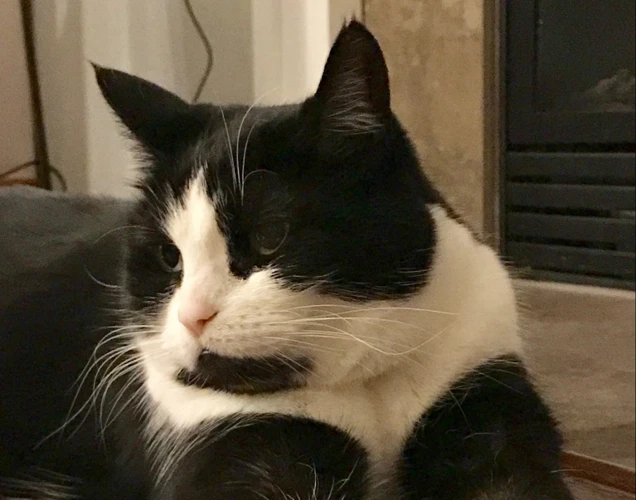
Training your American Wirehair to cope with separation anxiety requires an effective strategy that involves implementing practical, positive and non-threatening techniques. This can be a perplexing task for pet owners, as separation anxiety can take a toll on the pet and the owner. However, with proper guidance and the right tools, your furry friend can learn to feel more comfortable and secure when left alone. In this section, we will explore some of the most successful techniques that pet owners can implement to train their American Wirehair to cope with separation anxiety. These methods focus on positive reinforcement and desensitization, and they help to prevent regression and ensure long-lasting results.
Positive Reinforcement
When training an American Wirehair to cope with separation anxiety, positive reinforcement is one of the most effective techniques to use. Positive reinforcement involves rewarding your cat for good behavior, rather than punishing them for bad behavior. This encourages your cat to repeat the good behavior in the future. Positive reinforcement can be achieved through treats, praise, or playtime.
Here are some examples of how to use positive reinforcement in training your American Wirehair:
| Behavior | Positive Reinforcement Technique |
|---|---|
| Entering their safe space on their own | Offering a treat or verbal praise |
| Sitting calmly during a departure | Offering a treat or toy |
| Playing quietly on their own | Offering a small treat or verbal praise |
It’s important to note that the rewards given for positive reinforcement should be immediate and consistent. This helps your cat to associate the behavior with the reward. Additionally, over time, the rewards can be gradually reduced as your cat becomes more comfortable with the behavior.
Using positive reinforcement can be a slow process, but it is important for building a strong relationship with your American Wirehair and helping them to cope with separation anxiety in a healthy way.
Desensitization
Desensitization is a gradual process that involves exposing your American Wirehair to situations that trigger their separation anxiety. The goal is to help them get used to being alone in a controlled environment and reduce their fear and anxiety over time. This technique involves starting with short periods of separation and gradually increasing the time until they can cope with being alone for extended periods. It’s important to remember that desensitization requires patience and consistency.
Step-by-Step Desensitization Training Plan
To start desensitization training with your American Wirehair, follow these steps:
| Step | Description |
|---|---|
| Step 1: Assess Your Cat’s Current Level of Separation Anxiety | Observe your cat’s behavior when you leave the house and when you return. Take note of any destructive behavior, excessive vocalization, or signs of stress and anxiety. |
| Step 2: Create a Safe Space | Set up a comfortable safe space for your cat to retreat to when you’re not at home. This could be a quiet room with their bed, toys, and litter box. |
| Step 3: Start with Short Separation Periods | Begin by leaving your cat alone for a very short time, such as 5-10 minutes. Use a treat or toy to distract them and make the experience positive. Gradually increase the time you’re away by 5-10 minutes over several weeks. |
| Step 4: Vary Your Departure Routine | To prevent your American Wirehair from developing a routine, vary your departure routine. For example, if you normally put on your shoes and pick up your keys before leaving, try doing these actions at different times during the day. |
| Step 5: Monitor Your Cat’s Progress | Observe your cat’s behavior during and after each session. If they are calm and relaxed when you return, you can gradually increase the time you’re away. If they continue to show signs of anxiety, go back to the previous time interval and stay there for a few more days before trying again. |
| Step 6: Reward Good Behavior | Praise and reward your cat for good behavior during each session. Use treats, toys, or verbal praise to reinforce positive behavior. |
| Step 7: Be Patient and Consistent | Desensitization requires patience and consistency. It’s important to stick to a routine and gradually increase separation time over several weeks or months. Don’t rush the process or punish your cat for showing signs of anxiety. |
By following these steps, your American Wirehair can gradually become more comfortable with being alone and reduce their separation anxiety. Remember to be patient and consistent, and always reward positive behavior.
Preventing Regression
When training your American Wirehair to cope with separation anxiety, it’s essential to focus on preventing regression. You want to ensure that the progress you’ve made in training is maintained and your cat doesn’t revert to old habits. Here are some tips to help prevent regression:
| Tip | Description |
|---|---|
| Consistency is Key | Make sure you’re keeping up with the training routine and not deviating from it. Consistency is crucial when it comes to preventing regression. |
| Avoid Lengthy Separations | Try not to leave your American Wirehair alone for extended periods, especially during the early stages of training. Gradually increase the time away once your cat has shown progress. |
| Environmental Factors | Take note of any changes in the environment that could trigger anxiety, such as new people or pets in the household. Address these issues immediately to prevent regression. |
| Positive Reinforcement | Continue to use positive reinforcement techniques, such as treats and praise, even after your cat has made progress. Reinforcing good behavior will help prevent regression. |
| Seek Professional Help | If you notice any signs of regression, seek help from a professional trainer or behaviorist. They can provide support and help with any issues that may arise. |
By following these tips, you can help prevent regression and ensure that your American Wirehair continues to improve in coping with separation anxiety. Remember, patience and consistency are key to success in training. Don’t get discouraged if there are setbacks along the way, and keep working towards a positive outcome for both you and your furry friend.
The Importance of Exercise and Mental Stimulation
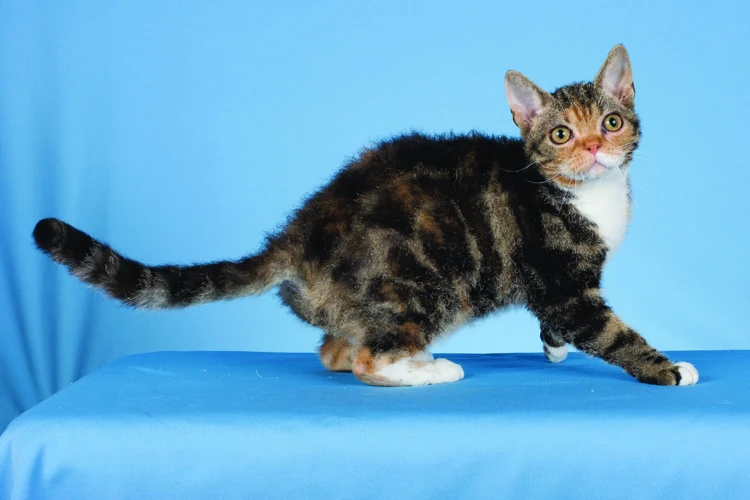
It’s no secret that exercise and mental stimulation play crucial roles in the overall health and well-being of our furry friends. The same holds true for American Wirehairs coping with separation anxiety. In fact, regular exercise and mental stimulation can be a critical component in helping an American Wirehair adjust to being alone without experiencing the negative effects of separation anxiety.
Regular Exercise: Exercise is essential in keeping your American Wirehair healthy and happy. Not only does exercise keep them physically fit, but it is also an excellent outlet for their excess energy. Without adequate exercise, your American Wirehair may struggle to relax while alone. Aim for at least 30 minutes of exercise a day, ideally broken up into two to three sessions to avoid over-exertion. A tired American Wirehair will be more content to rest while you’re away.
Mental Stimulation: In addition to physical exercise, providing mental stimulation can help prevent your American Wirehair from becoming bored and anxious. Try incorporating puzzle toys, treat-dispensing toys, and even interactive games into their daily routine. This will keep their minds engaged and focused on something other than their anxiety.
Vary Their Activities: Another way to keep your American Wirehair engaged and stimulated is by varying their activities. This will help prevent them from becoming bored or stuck in a routine. Mix up the types of toys you provide, and take them on different types of walks or hikes to keep things interesting.
Incorporate Training: Training can be an excellent way to mentally stimulate your American Wirehair while also improving their behavior. Teaching them new tricks, obedience commands or agility training can be an excellent outlet for their intelligence and energy.
By incorporating regular exercise and mental stimulation into your American Wirehair’s routine, you can improve their overall health and happiness, while also helping them cope with separation anxiety. It’s important to remember that every American Wirehair is different and may have different needs when it comes to exercise and mental stimulation. Pay close attention to your furry friend’s behavior and cues to determine what activities they enjoy most. If you’re unsure, consult your veterinarian or a professional trainer to determine what activities might work best for your furry friend.
Consulting a Professional

If, after trying various techniques to help your American Wirehair cope with separation anxiety, you find that the problem persists, it may be time to seek the assistance of a professional trainer or behaviorist. These individuals possess knowledge and skills that can help you understand the root causes of separation anxiety in cats and develop a customized training plan tailored to your pet’s specific needs.
Working with a professional can provide invaluable support as you navigate this complex issue. Additionally, they can help you identify potential medical issues that could be exacerbating your cat’s anxiety and refer you to a veterinary specialist, if needed.
Trainers and behaviorists use various techniques to treat anxiety in cats, from desensitization and training to medication. They can also help you create a comprehensive plan to address any underlying behavioral issues that may be contributing to the problem.
When choosing a professional, look for someone who is certified and experienced. Consider their training philosophy, methodology and approach to ensure that it aligns with your own beliefs and values as a pet owner.
Remember that every pet is unique, and what works for one may not work for another. However, with patience, persistence, and the right support, it is possible to improve your American Wirehair’s quality of life and ensure that they feel safe and secure even when you’re not around.
Rewards of Successful Training
One of the most rewarding aspects of successfully training an American Wirehair to cope with separation anxiety is the improvement in their behavior and wellbeing. A well-trained American Wirehair will develop a sense of security and confidence, which will reflect in their overall temperament.
Behavioral Improvements: By training your American Wirehair to cope with separation anxiety, you will notice a significant improvement in their destructive behavior. They will no longer feel the need to chew on furniture or household items, dig up the garden or pace around your home. Your pet will also become more well-behaved during absences, and you will regain the peace of mind that comes with knowing they are safe and secure.
Improved Wellbeing: Separation anxiety can take a toll on your pet’s physical and mental health. By addressing this issue through effective training techniques, you will improve your pet’s wellbeing. When your American Wirehair is no longer suffering from separation anxiety, they will be happier, healthier, and more relaxed. This will lead to improved quality of sleep, better cognitive functioning, and overall enhanced health.
Stronger Bond: Training your American Wirehair to deal with separation anxiety will help to strengthen your relationship with your pet. Your pet will recognize your efforts to keep them safe and cared for, and the bond between you will deepen. You will feel more confident that your pet is no longer suffering from separation anxiety, and this will lead to greater trust between you and your furry companion.
Greater Freedom: Another benefit of training your American Wirehair to cope with separation anxiety is greater freedom for yourself. You will be able to leave your pet at home without worrying about destructive behavior or distress. This will allow you to leave the house for longer periods and engage in activities that you may have avoided before.
Training your American Wirehair to cope with separation anxiety is a rewarding experience. Not only will it lead to improved behavior and wellbeing for your furry companion, but it will also strengthen your bond and allow for greater freedom in your own life. With effort and dedication, you can successfully train your American Wirehair to cope with separation anxiety and enjoy the benefits of a happy, healthy, and well-behaved pet.
Conclusion
In conclusion, dealing with separation anxiety in American Wirehairs can be a daunting task, but it is important to approach it with patience and understanding. It is crucial to recognize the signs of separation anxiety and address them as soon as possible to prevent the condition from worsening. Creating a safe space and implementing gradual departures can help the cat feel more secure when alone.
Effective training techniques such as positive reinforcement and desensitization can also have a significant impact on the cat’s separation anxiety. It is essential to remember to avoid punishment and to prevent regression by maintaining consistent training and mental stimulation.
Exercise and mental stimulation also play a crucial role in helping a cat cope with separation anxiety. Regular exercise and playtime can help reduce anxiety and provide a healthy outlet for any excess energy. Consulting with a professional can also be beneficial in creating a tailored plan for your cat’s specific needs.
At the end of the day, successfully training a cat with separation anxiety can be challenging, but the rewards are well worth it. A happy and confident cat can lead to a better quality of life, not only for the cat but also for its owner. With time, patience, and effective training techniques, it is possible to improve their ability to cope with separation anxiety.
Frequently Asked Questions
1. Can American Wirehairs develop separation anxiety?
Yes, American Wirehairs, like any other breed, can develop separation anxiety if not trained properly.
2. What are some signs of separation anxiety in American Wirehairs?
Some signs include destructive behavior, excessive barking or howling, pacing or digging, and attempts to escape.
3. Can separation anxiety in American Wirehairs be prevented?
Yes, with proper training, exercise, and mental stimulation, it is possible to prevent separation anxiety in American Wirehairs.
4. Is punishment an effective way to address separation anxiety in American Wirehairs?
No, punishment is not effective. It can actually worsen the anxiety and cause more destructive behavior.
5. How can I create a safe space for my American Wirehair?
You can create a safe space by providing a comfortable and quiet area for your pet, with a bed or crate.
6. What is desensitization and how can it help my American Wirehair with separation anxiety?
Desensitization is gradually exposing your pet to the stimuli that trigger their anxiety, in order to increase their tolerance. This can include practicing short departures, and gradually increasing the time as your pet becomes more comfortable.
7. What types of exercises are good for American Wirehairs?
American Wirehairs benefit from exercises that challenge their physical and mental abilities, such as agility training, fetch, and puzzle games.
8. Can consulting with a professional help my American Wirehair with separation anxiety?
Yes, a professional trainer can help identify the causes of anxiety in your pet, and create a customized training plan to address it.
9. Is it possible to completely eliminate separation anxiety in American Wirehairs?
While it may not be completely eliminated, with consistent training and a supportive environment, American Wirehairs can learn to cope with separation anxiety and show significant improvement.
10. How can I reward my American Wirehair for good behavior?
Rewards can include treats, praise, and playtime with their favorite toys. Consistent positive reinforcement for good behavior can help reinforce their training and build their confidence.




